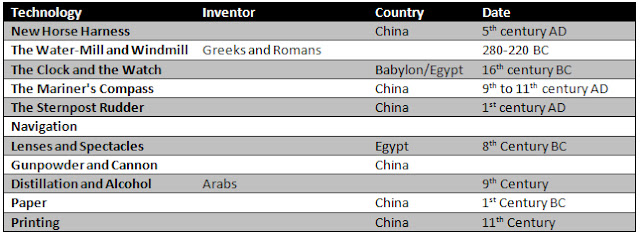1. Fire
In his fight for survival, Neanderthal man had fire, which he used for light, heat, and to harden the tips of his spears.
2. Hand axes, scrapers, knives, awls and spear points
A souvenir sheet from Gabon, Scott 685, shows some of the standard tools, made from stone and flint, which would have been used by Neanderthal man and his Upper Paleolithic successors. A variety of hand axes, scrapers, knives, awls and spear points were in use. The hand axe, which could be held in the palm of the hand, was Neanderthal man’s Swiss army knife. He used it for cutting, scraping, butchering, prying up roots, and cleaning animal skins. Excavations at Neanderthal sites like Le Moustier in France have shown that tools were produced in specific areas, which may have been Stone Age manufacturing complexes.
3. Hunting
Once thought to be a scavenger incapable of hunting, Neanderthal man was, in fact, a superb hunter. Some of the animals he hunted—aurochs, cave bears, wild boars, and mammoths—were ferocious, dangerous and unpredictable.
4. Rudimentary language. The hunter subjected himself to the possibility of being mauled, mangled or killed each time he confronted his quarry. For that reason, Neanderthals hunted in groups, which afforded them greater protection. Hunters had to agree upon a plan of attack, cooperate in killing the trapped animal and, afterward, devise a means to get the carcass home. That presupposed a rudimentary language.
5. Clothing
The skins, pelts, tusks, and antlers of dead animals were used for other needs of the clan. A North Korean first day cover shows a prehistoric woman making an item of fur clothing from an animal pelt. It took great skill to render skins supple enough to be worn as clothing.
6. Burial
Neanderthals were the first to bury their dead. The use of red ochre played a prominent role in their burials. Bones found at many Neanderthal burial sites were stained with the red pigment. It is unknown whether the ocher furnished evidence of some sort of body painting or whether a red wrap originally covered the body but disintegrated with time, leaving its color on the bones.
7. Projectiles. Modern humans introduced new and better tools. In hunting, the Cro-Magnon knew how to use projectiles.
8. Bows and arrows
The newcomers could hurl javelins and use bows and arrows, which made hunting a lot easier and safer.
9. “Mobile homes”
Stone Age man did not live in caves and rock shelters alone. A growing body of evidence shows that he had other dwellings made of wood, mammoth bones, grasses, and hides. Prehistoric man probably invented these “mobile homes” so that he could venture further away from his home cave in search of the animals he depended upon for food.
10. Transportation
Stone Age people also made inroads on developing methods of transportation. Rock carvings have been found in Norway, which show men in skin boats hunting seal and porpoise. Such boats were well adapted to cold climates where waters were filled with floating ice. The modern Eskimo umiak is very similar to these prehistoric boats.
11. Sledge
Prehistoric people also invented the sledge, used from Scandinavia to the Urals. This facilitated movement of heavy loads over both snow and dry land. The great trilithons at Stonehenge were brought on sledges to their erection site on Salisbury plain in Wiltshire, England.
12. Skiing
Stone Age people were also the first skiers. As a means of getting around, skis have been with us for a long, long time. A stamp from Norway, Scott 486, shows a prehistoric rock carving of a figure on skis holding a pole.
13. Ochre
Neanderthal man was the first to use ochre as a crayon for marking on rock but Cro-Magnon man carried painting to sublime heights. The breathtaking animal murals painted on cave walls and vaults in France and Spain are testimony to his well-developed aesthetic sense.
14. Decorative objects
Many decorative objects were fashioned from stone, bone, wood, antler, and ivory. A carved elk’s head staff is shown on a Lithuanian stamp, Scott 579. A sculpture from the Lepenski Vir archaeological site in Serbia is depicted on Yugoslavia, Scott 1205. The sculpture blends human and fish characteristics. The stamp, Aland Islands Scott 95, gives an example of Neolithic pottery.
15. Religion. Stone Age people demonstrated the first glimmerings of a religious sense with their production of Venus figurines. Such female figurines have been found in many parts of the world dating to the same era.














































